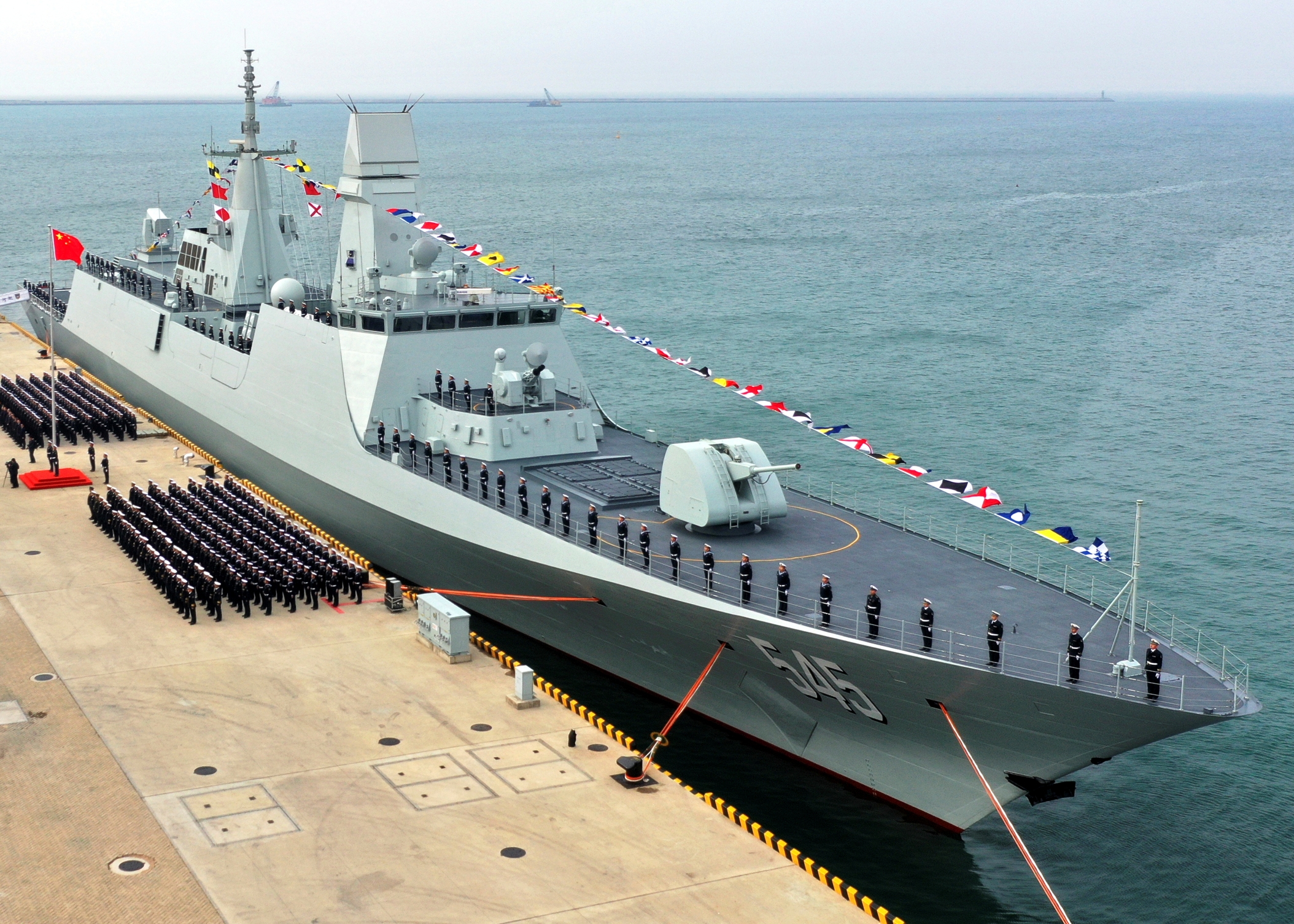
China has reportedly maintained a strong presence of warships in the disputed maritime zone near South Korea, one of the United States’ two security allies in Northeast Asia.
Newsweek has contacted the Chinese Foreign Ministry for comment.
Why It Matters
Under a 2000 agreement, China and South Korea established the Provisional Measures Zone (PMZ) in the Yellow Sea, where their 230-mile-wide exclusive economic zones (EEZs) overlap, pending a final maritime boundary settlement between the two nations.
However, China—which operates the world’s largest navy by hull count—has been accused of attempting to militarize the Yellow Sea by deploying warships to the PMZ and to waters considered part of South Korea’s EEZ.
The persistent presence of the Chinese navy near South Korea, which hosts 28,500 U.S. troops tasked with deterring North Korean attacks, comes as the U.S. has expanded the mission of its forces on the Korean Peninsula to include countering China’s threat.
What To Know
Citing multiple military sources and South Korean lawmaker Lim Jong-deuk, the Korea JoongAng Daily reported on Tuesday that China’s naval activities in the PMZ surged between August 23 and 28, with an average of three warships sent daily to the area.
The surge of Chinese navy coincided with South Korean President Lee Jae Myung’s visits to Japan and the U.S. to meet Prime Minister Shigeru Ishiba and President Donald Trump. The three allies have been coordinating on regional security issues.
According to the report, Chinese naval ships deployed in the PMZ during that period included Type 054A and Type 054B frigates. The latter, the lead ship of which was commissioned in January, is designed with stealth technology to enhance capabilities.
The South Korean military also tracked other Chinese vessels, believed to conduct drills and live-fire tests, near the country—including 13,000-ton Type 055 destroyers, which are capable of launching over 100 missiles, and Type 815 intelligence-gathering ships.
The presence of Chinese spy ships raised concern in South Korea as they can intercept signals from American and South Korean navies. The Pentagon said China had deployed spy ships near the U.S. and Australia to collect intelligence on their drills.
Facing China’s growing naval activities, South Korea has difficulty maintaining what the report described as a “proportional presence” to monitor the Chinese navy as the U.S. ally operates about 150 ships, while China has built a fleet of over 370 vessels.
Meanwhile, the South Korean navy launched its fifth destroyer equipped with the Aegis combat system, ROKS Dasan Jeong Yak-yong, on Wednesday. The warship features advanced stealth technology and enhanced ballistic missile interception capabilities.
What People Are Saying
Park Won-gon, a professor of international relations at South Korea’s Ewha Womans University, told the Korea JoongAng Daily: “China’s decision to send warships to the Yellow Sea during this series of summits suggests it wanted to counter the diplomatic message of Seoul, Washington and Tokyo.”
China’s Foreign Ministry said following a meeting between Chinese and South Korean officials in April: “The two sides also agreed to enhance mutual trust and strive to make the Yellow Sea into a sea of peace, friendship and cooperation, while jointly promoting the continuous development of the China-ROK strategic cooperative partnership.”
What Happens Next
China is likely to continue naval activities in the Yellow Sea to signal its military power to regional U.S. allies. It remains to be seen how South Korea, with U.S. assistance, will maintain its naval presence while defending against North Korea.



